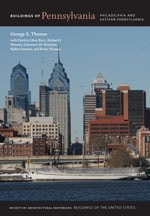
Unlike Elmwood Park ( NO31), Pembroke Village was federally funded. Its architect, Milton Medary, was simultaneously the chairman of the United States Housing Corporation and he used his position to make the development a model of its kind. Together with Sears, a Harvard-trained landscape architect, he laid out a system of concentric streets to encompass a community building, movie theater, and hub of stores at the intersection of two major streets. A few blocks to the west, a park and school formed a secondary focus. Originally planned for 1,258 units on 171 acres, it had grown by 1918 to comprise over 2,000 units, making it one of the largest wartime housing projects. Medary produced designs for nine house types, which ranged in size from three to eight rooms, but most were six to eight rooms, a size preferred by Bethlehem Steel's executives seeking to attract labor and by the workers themselves. The war ended with only a few houses begun, and when the United States Housing Corporation was dissolved along with all other federal housing agencies, private developers finished the work. Only 160 houses were completed, more than half following Medary's design. Their brick detailing and slate roofs were evidence of the high aspirations at Pembroke.








